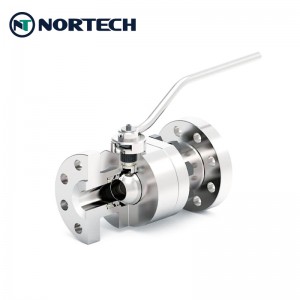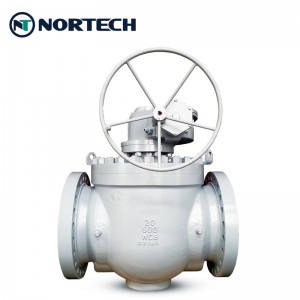the installation of the ball valve
Matters needing attention in ball valve installation
Preparation before installation
1. The pipelines before and after the ball valve are ready. The front and rear pipes should be coaxial, and the sealing surfaces of the two flanges should be parallel. The pipeline should be able to bear the weight of the ball valve, otherwise the pipeline must be equipped with proper support.
2. Purge the pipelines before and after the valve to remove oil stains, welding slag and all other impurities in the pipelines.
3. Check the mark of the ball valve to find out that the ball valve is intact. Fully open and close the valve several times to confirm that it is working properly.
4. Remove the protective parts on the connecting flanges at both ends of the ball valve.
5. Check the valve hole to remove possible dirt, and then clean the valve hole. Even small foreign matter between the valve seat and the ball may damage the valve seat sealing surface.
Install
1. Install the valve on the pipeline. Either end of the valve can be installed at the upstream end. The valve driven by the handle can be installed at any position on the pipeline. But the ball valve with gear box or pneumatic driver should be installed upright, that is, installed on the horizontal pipeline, and the driving device is above the pipeline.
2. Install a gasket between the valve flange and the pipeline flange according to the pipeline design requirements.
3. The bolts on the flange need to be tightened symmetrically, successively and evenly.
4. Connect pneumatic pipeline (when pneumatic driver is used).
Inspection after installation 1. Operate the driver to open and close the ball valve several times. It should be flexible and free of stagnation to verify that it is working properly.
2. Check the sealing performance of the flange joint surface between the pipeline and the ball valve according to the pipeline design requirements.
Preparation before installation
1. The pipelines before and after the ball valve are ready. The front and rear pipes should be coaxial, and the sealing surfaces of the two flanges should be parallel. The pipeline should be able to bear the weight of the ball valve, otherwise the pipeline must be equipped with proper support.
2. Purge the pipelines before and after the valve to remove oil stains, welding slag and all other impurities in the pipelines.
3. Check the mark of the ball valve to find out that the ball valve is intact. Fully open and close the valve several times to confirm that it is working properly.
4. Remove the protective parts on the connecting flanges at both ends of the ball valve.
5. Check the valve hole to remove possible dirt, and then clean the valve hole. Even small foreign matter between the valve seat and the ball may damage the valve seat sealing surface.
Install
1. Install the valve on the pipeline. Either end of the valve can be installed at the upstream end. The valve driven by the handle can be installed at any position on the pipeline. But the ball valve with gear box or pneumatic driver should be installed upright, that is, installed on the horizontal pipeline, and the driving device is above the pipeline.
2. Install a gasket between the valve flange and the pipeline flange according to the pipeline design requirements.
3. The bolts on the flange need to be tightened symmetrically, successively and evenly.
4. Connect pneumatic pipeline (when pneumatic driver is used).
Inspection after installation 1. Operate the driver to open and close the ball valve several times. It should be flexible and free of stagnation to verify that it is working properly.
2. Check the sealing performance of the flange joint surface between the pipeline and the ball valve according to the pipeline design requirements.
Nortech is one of the leading industrial valve manufacturers in China with quality certification ISO9001.
Major products: Butterfly Valve, Ball Valve,Gate Valve, Check Valve, Globe Vavlve,Y-Strainers, Electric Acurator , Pneumatic Acurators .
Post time: Sep-01-2021


